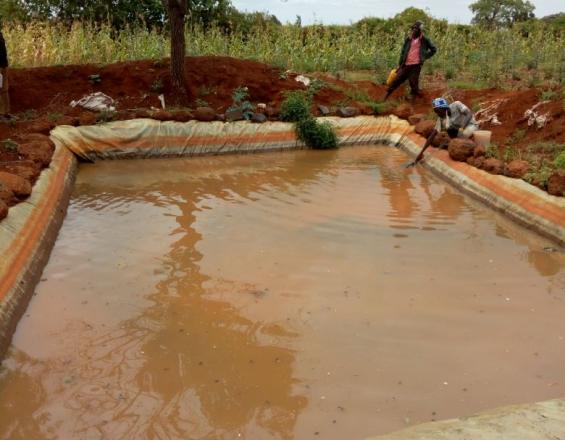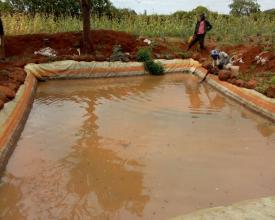
Home Gardens Empower Communities

The project is working on providing alternative livelihoods for former Borana pastoralist, who have settled down to try agro-pastoralist production as a means to food security. In a first step, households joined hands to harvest rain water by creating a small pan near their homesteads and use this for a small home garden. Although creating a pan takes a bit of time, when people joined hands, they were able to work on a single pan for relatively shorter time. In the gardens vegetables like kale, onions, pepper, cassava, tomatoes, spinach, watermelon are grown. Some farmers are also piloting a small agroforestry in one corner of their garden. The food produced is used for home consumption and surplus is sold to the neighbouring villages.These pans and gardens are done for one household at a time but the long term goal is to reach every household in the community. Thus, this marks a departure from overreliance on pure pastoralism, which is negatively affected by climate change.
Impacts
- As a result of consuming a more balanced diet with locally produced food, nutrition of the members have improved.
- Environmentally, the practice minimizes soil erosion as some crops planted can stop soil erosion.
- The first group are already seeing the economic benefit of their work. Income from sale of their produce to other villages is being realized.
- Part of the proceeds from sale of vegetables is put aside as a saving kitty.
- New members from neighbouring villages have adopted best practice and are replicating in their home gardens.
- On the social aspect, people work together and therefore learn to support each other. The members conduct regular meetings to discuss their progress and plan their work for the week ahead.
- The practice has attracted many members to the group. Intitially, 20 members started but the membership has now grown to over 40 households in a span of five months.
